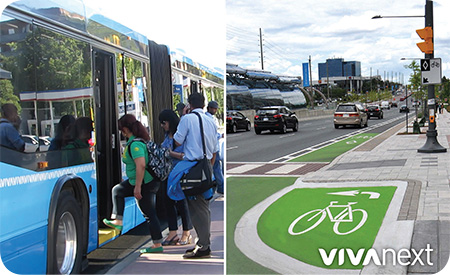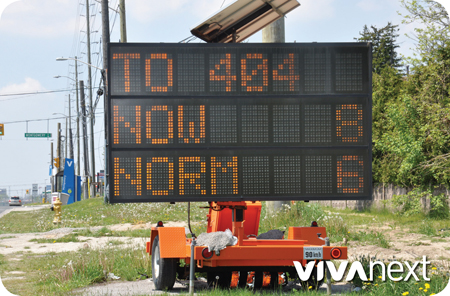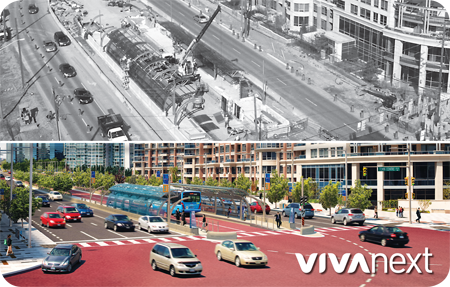Every now and again, members of the community either see vivaNext and YRT/Viva as one and the same, or take one of us for the other. We thought we would help to clear up exactly how they differ.
The essential difference between vivaNext and YRT/Viva is what they do:
- vivaNext plans and builds rapid transit and the facilities associated with it.
- YRT/Viva maintains and operates the buses and system elements.
While we each operate as separate organizations, we are connected – much like cousins. Here is a little family history:
YRT/Viva
York Region Transit [YRT] came into being in 2001 when York Region amalgamated five municipal transit agencies.
Viva was launched in 2005 as an additional transit service that focused more on “rapid”. Viva Bus Rapid Transit features faster service, off-board payment and traffic signal priority technology. The next stage of Viva BRT was the move into dedicated bus lanes known as “rapidways”, and began with the route on Highway7 East in Markham. The rapidway project was designed, planned and built by vivaNext!
YRT/Viva operates both types of transit together. YRT, which travels in and out of neighbourhoods, feeds customers into Viva as one cohesive system.
vivaNext
York Region soon recognized that there was a real need for transit infrastructure projects to move forward quickly. As a result – VivaNext was born as the project name, and York Region Rapid Transit Corporation was the company managing the project. Once funding was received in 2009, vivaNext became more than a plan – it became a brand for the construction projects transforming York Region’s busiest roads. It includes dedicated lanes and Vivastations in the rapidways – as well as facilities and terminals in key locations across York Region.
As each vivaNext project is completed, YRT/Viva takes on the operations with service and maintenance plans.
Transit is evolving in York Region and vivaNext and YRT/Viva are collaboratively working together to make that happen. What it means to you is convenient transportation in attractive, well-connected communities.










